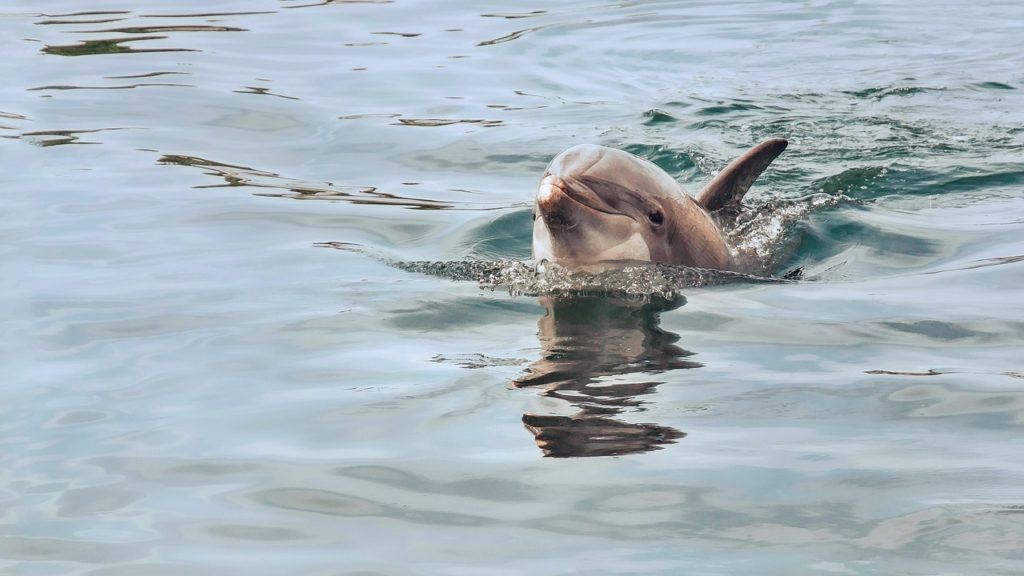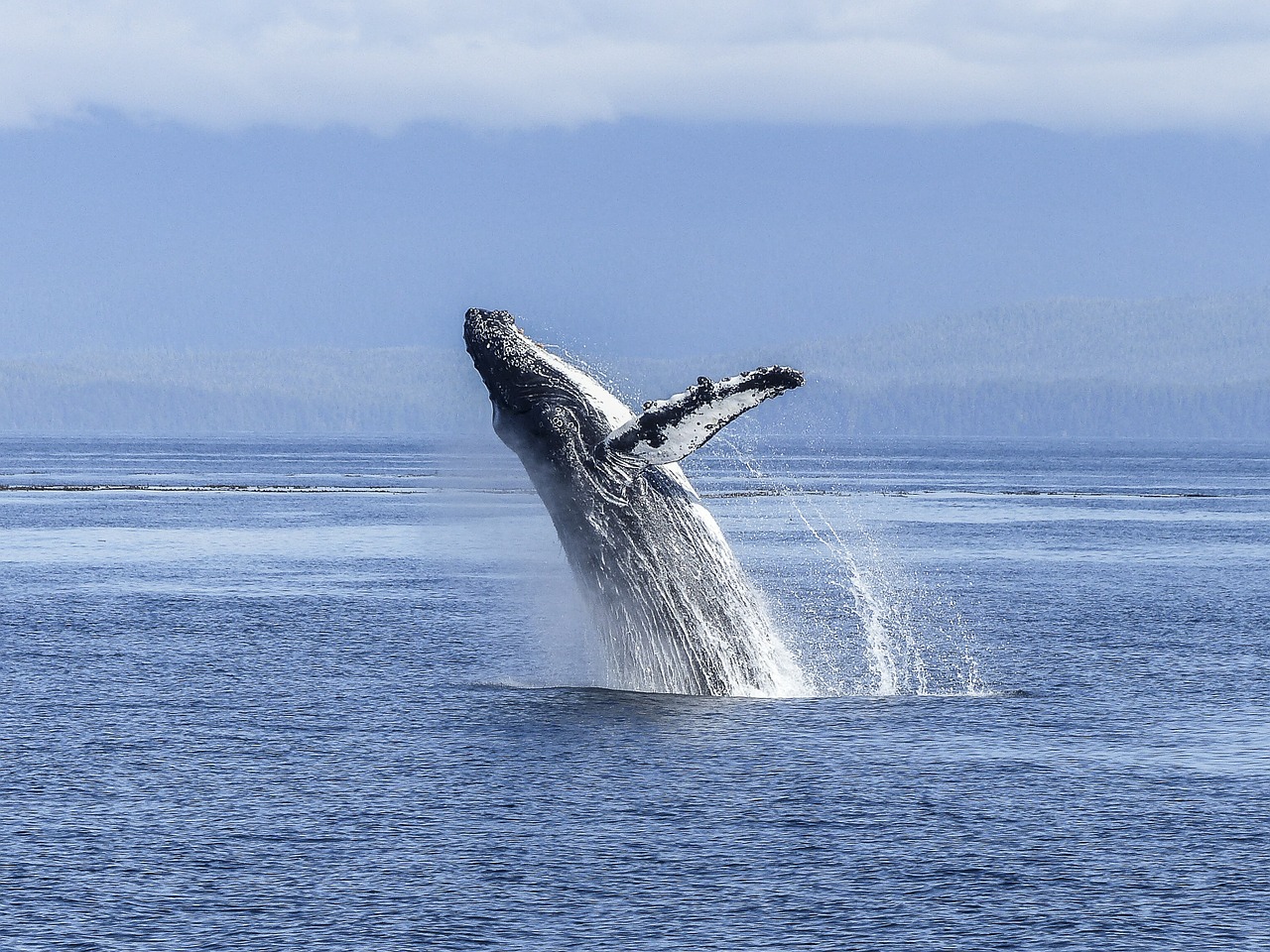The sophisticated intelligence shown by whales and other cetaceans has long intrigued and enchanted humans. Over millions of years, these animals have evolved a highly complex network of neurological and sensory systems that are certainly different than those of humans, but show enough similarities to make high-level interspecies communication and understanding possible. Cetaceans’ intelligence is just one factor that has spurred environmental and animal activists to fierce advocacy on these animals’ behalf.
Here’s an overview of what we know about whale and dolphin intelligence, as uncovered by scientists.
Bigger brains make smarter and more social animals
The brain size of whales and dolphins is impressive. In fact, the brain-body ratio of dolphins is exceeded only by humans. As is typical among animals with larger brains, cetaceans tend to be sociable, to take attentive care of their young, to engage in more complex behaviors, and to live longer.

One evolutionary theory states that bigger-brained animals are more intelligent because living in larger groups with complex social systems requires a greater capacity to observe and to process information and subtle cues quickly. This “cultural brain hypothesis” says that encephalization—growth in brain capacity or size—is linked to expanding networks of mutually beneficial behavior, such as hunting in groups and the development of different dialects within a species.
Strong bonds between parents and children
Whales’ and dolphins’ patterns of reproduction and development also parallel those of humans. Cetacean mothers give birth only a few times, and their young experience delayed sexual maturation and independence. Depending on the species, whale and dolphin offspring often spend all or much of their lives in close proximity to their parents, leaving them only to mate when they reach maturity.
A sonar superpower
Toothed whales and dolphins have an additional brain power unknown to humans: echolocation.
An entire section of these cetaceans’ brains is devoted to echolocation, which provides them with the ability to “see” via sonar. Water is an excellent conductor of sound waves; sound travels better in water than light does. So it’s natural that whales and dolphins would use their “superpower” of echolocation to find their way through the water.
Through echolocation, they are able to process unusually complex sets of information about their environments to help them navigate, hunt, and communicate. For example, through the clicking sounds other members of their pods make during echolocation, dolphins can even figure out which objects others are observing at any given moment.
Brain structures that support complexity
The brains of whales and dolphins are filled with spindle neurons, a type of specialized brain cell connected with higher-level thinking abilities such as memory, communication, logic, recognition of objects, and problem-solving abilities.
Researchers have also discovered that whale and dolphin brains contain many more folds and grooves than human brains. This means that their brains have a larger surface area, which possibly correlates with a greater number of information-processing units that can theoretically engage in more complicated thought processes and problem-solving.
Additionally, cetaceans’ limbic system—the part of the brain that handles emotional processing—shows greater intricacy than that of humans. Experts in dolphin neurology point out that this greater development of the limbic system is associated with high levels of social and community functioning, to the point that a dolphin on its own remains incomplete without connections to a complex society.
Playfulness that shows intelligence

The 20th century historian and scholar Johan Huizinga used the Latin term Homo ludens (which can be translated as “man at play”) to describe modern humans. The term acknowledges that our great capacity to have fun and be playful with one another—to engage in play as distinct from work or other activities related to survival—signals a higher level of intelligence.
In light of this insight, whales and dolphins can be said to be extremely intelligent. These species cavort, leap out of the water, do back flips, and roughhouse and tumble with one another for no discernable reason other than the sheer joy of it. Dolphins often create their own games of tag, start high-speed racing games, or throw a fish or an object back and forth.
Researchers have filmed whales and dolphins teaming up for play. In some cases, dolphins will swim up onto whales’ noses, then lift themselves high up out of the water and slide down the whales’ heads to the other side. Even cetaceans in captivity frequently play with toys, their human caretakers, and one another.
A social whole that is greater than the sum of its parts
Scientists have discovered that orcas may use distinct names to refer to other individual whales, and that sperm whales communicate with one another in a variety of dialects. Dolphins have been seen to assist fishermen bringing in their catches, and the highly individualized whistling sounds they make to identify one another even seem to be involved in frequent episodes of gossiping about one another.
Additionally, the parts of the orca’s brain that are involved in self-awareness and social perception are proportionally larger than the analogous brain parts in humans. This information could suggest that these animals’ sense of self is possibly better developed than that of humans. This may have something to do with their experience as highly social animals that have developed both an individual sense of themselves, and a sense of emotional community as members of an interdependent pod.
Dolphins’ and whales’ remarkable abilities demonstrate how much we humans have in common with other species on our shared planet. All animals are worthy of our respect and protection, but in whales, dolphins, and other particularly intelligent species, we humans can find a special kinship.

